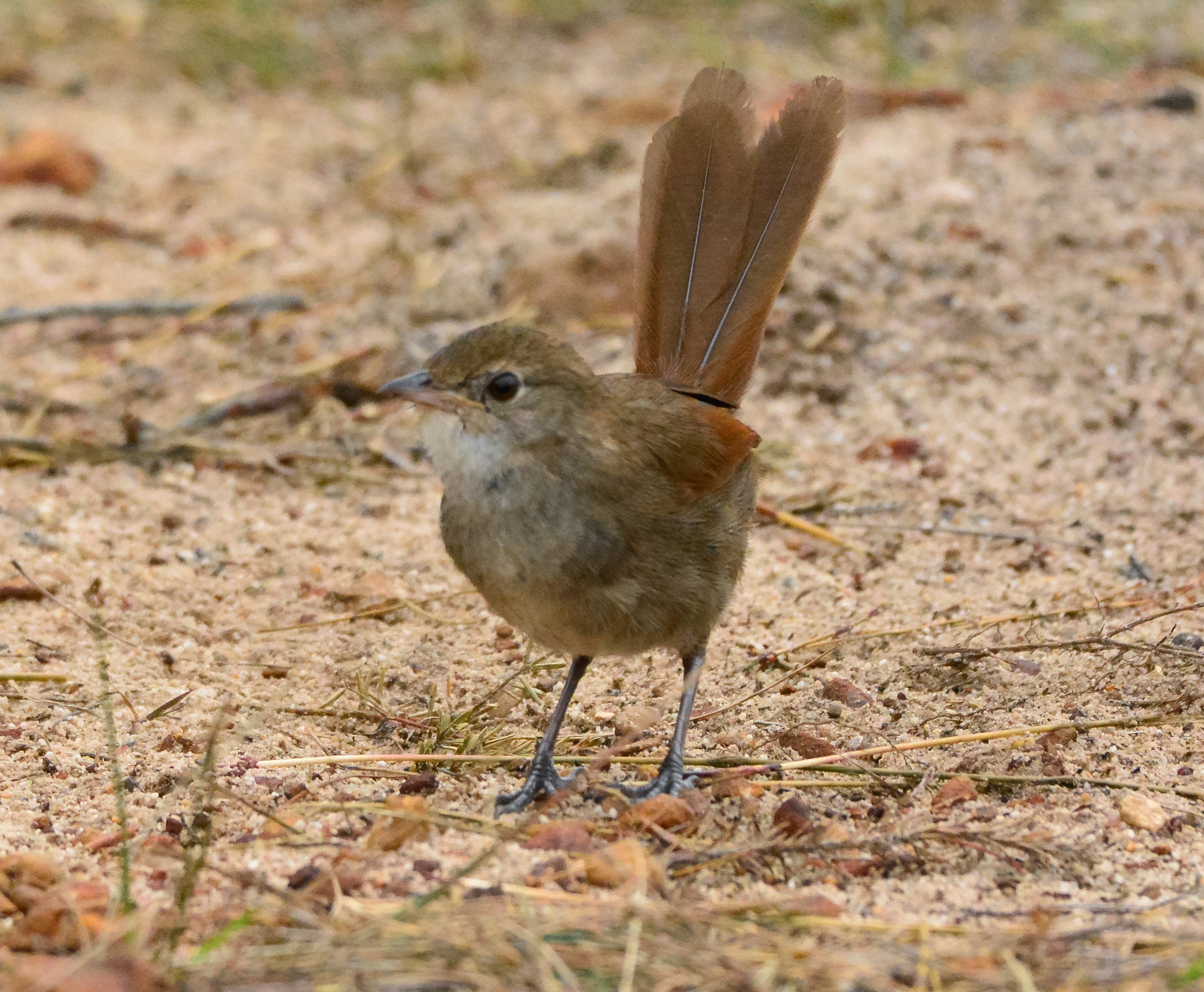Elected representatives in government are in charge of the policy and funding that can make or break saving threatened species. Their decisions and actions matter.
Mackellar has or used to have 28 threatened animals within its boundaries. One of them is me, the Eastern Bristlebird.
We took care to attach appropriate images that are as close to representative of each species as our resources and the availability of images allowed. However, we could not ensure perfect accuracy in every case. Some images show species that share the same genus but not at the species or subspecies level.
Eastern Bristlebird
Dasyornis brachypterus
Status: Endangered
The Environment Protection and Biodiversity Conservation Act 1999 (EPBC Act) lists threatened species under six categories:
Extinct, Extinct in the wild, Critically Endangered, Endangered, Vulnerable, Conservation dependent. Read more about these categories
Dasyornis brachypterus is found across 15 electorates.
The eastern bristlebird is a small ground-dwelling bird. It is a dark cinnamon-brown colour and is well camouflaged in the low, dense, ground or understorey vegetation in which it occurs. Nests are built low to the ground in low dense vegetation. It mainly feeds on insects, seeds and small fruits. It is only capable of making, weak, low, short-range flights. It only has a limited ability to disperse to new habitat or recolonise habitat after disturbance. It occurs in a variety of habitat, however, it is relatively rare and occurs in three disjunct, localised coastal populations: one in the Queensland/NSW border area; one in the Illawarra and Jervis Bay; and one in the NSW/Victoria border area.¹
Explore more about this species on the Atlas of Living Australia





Explore more about the threats facing species on our Resources page.
- Bynoe's Wattle (Acacia bynoeana)
- Downy Wattle (Acacia pubescens)
- Sunshine Wattle (Acacia terminalis subsp. terminalis MS)
- Asterolasia elegans (Asterolasia elegans)
- Thick-leaf Star-hair (Astrotricha crassifolia)
- Thick-lipped Spider-orchid (Caladenia tessellata)
- Leafless Tongue-orchid (Cryptostylis hunteriana)
- White-flowered Wax Plant (Cynanchum elegans)
- Darwinia biflora (Darwinia biflora)
- Deyeuxia appressa (Deyeuxia appressa)
- Camfield's Stringybark (Eucalyptus camfieldii)
- Yellow Gnat-orchid (Genoplesium baueri)
- Caley's Grevillea (Grevillea caleyi)
- Grevillea shiressii (Grevillea shiressii)
- Hal (Haloragodendron lucasii)
- Kunzea rupestris (Kunzea rupestris)
- Lasiopetalum joyceae (Lasiopetalum joyceae)
- Deane's Tea-tree (Leptospermum deanei)
- Deane's Melaleuca (Melaleuca deanei)
- Angus's Onion Orchid (Microtis angusii)
- Hairy Geebung (Persoonia hirsuta)
- Pimelea curviflora var. curviflora (Pimelea curviflora var. curviflora)
- Scrub Turpentine (Rhodamnia rubescens)
- Native Guava (Rhodomyrtus psidioides)
- Magenta Lilly Pilly (Syzygium paniculatum)
You are in federal electorate Mackellar.
